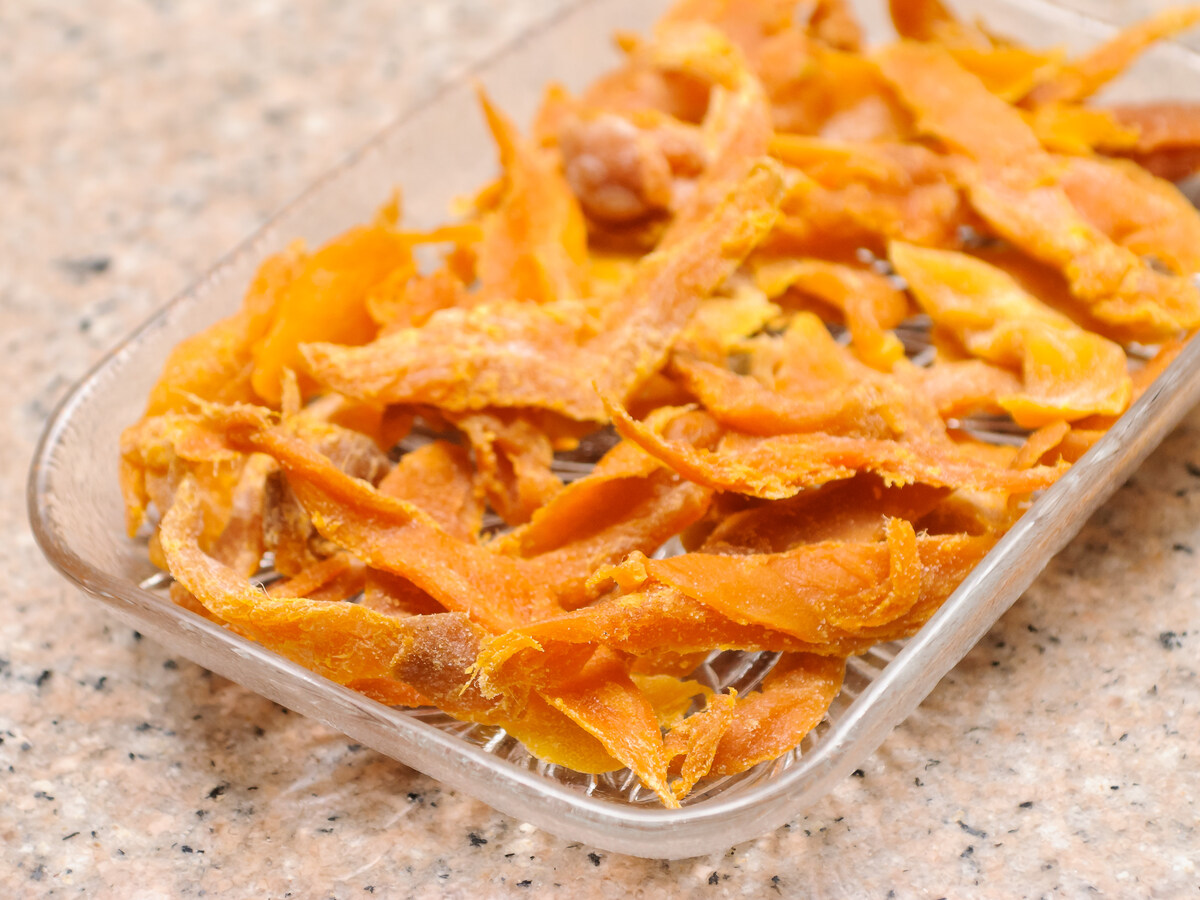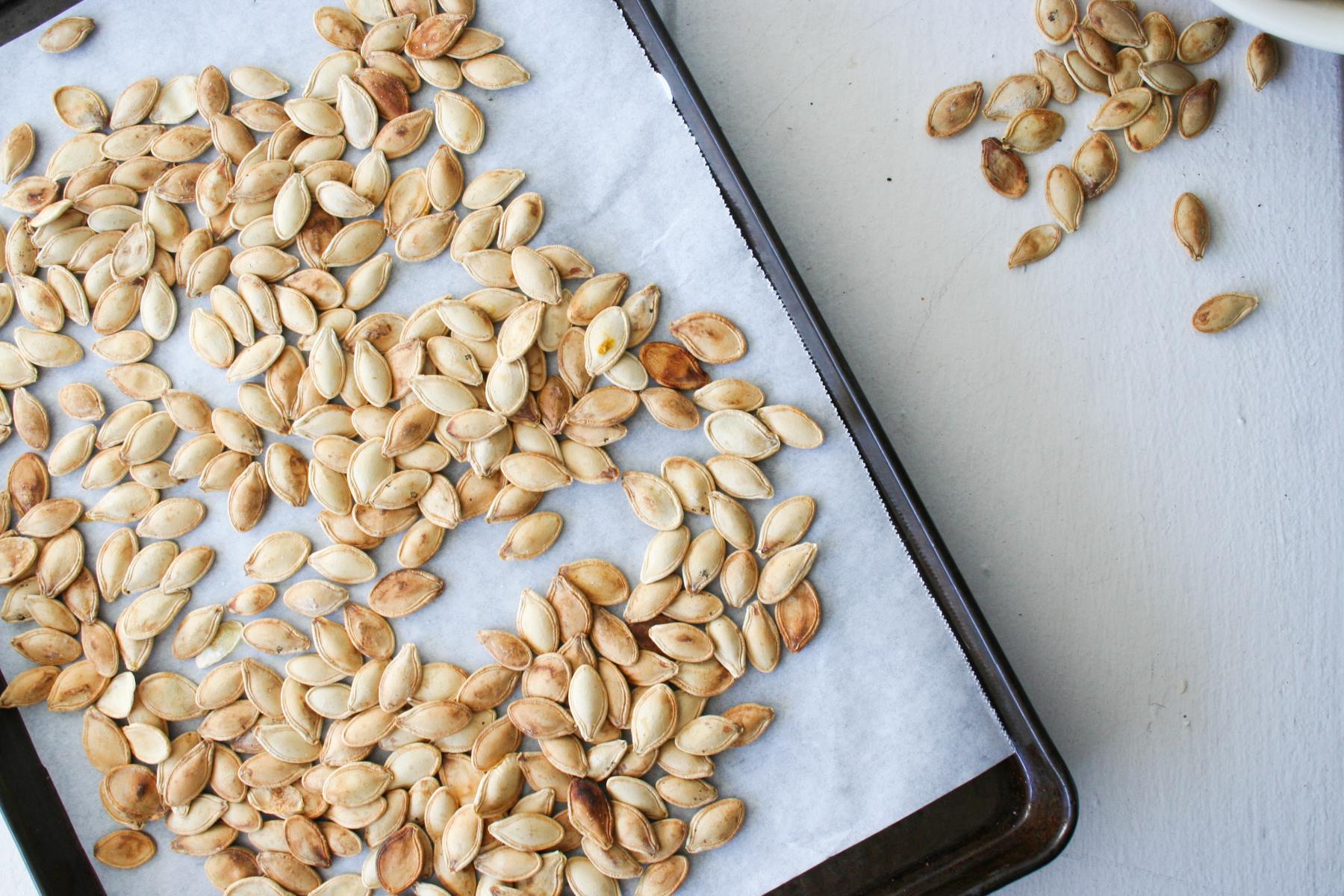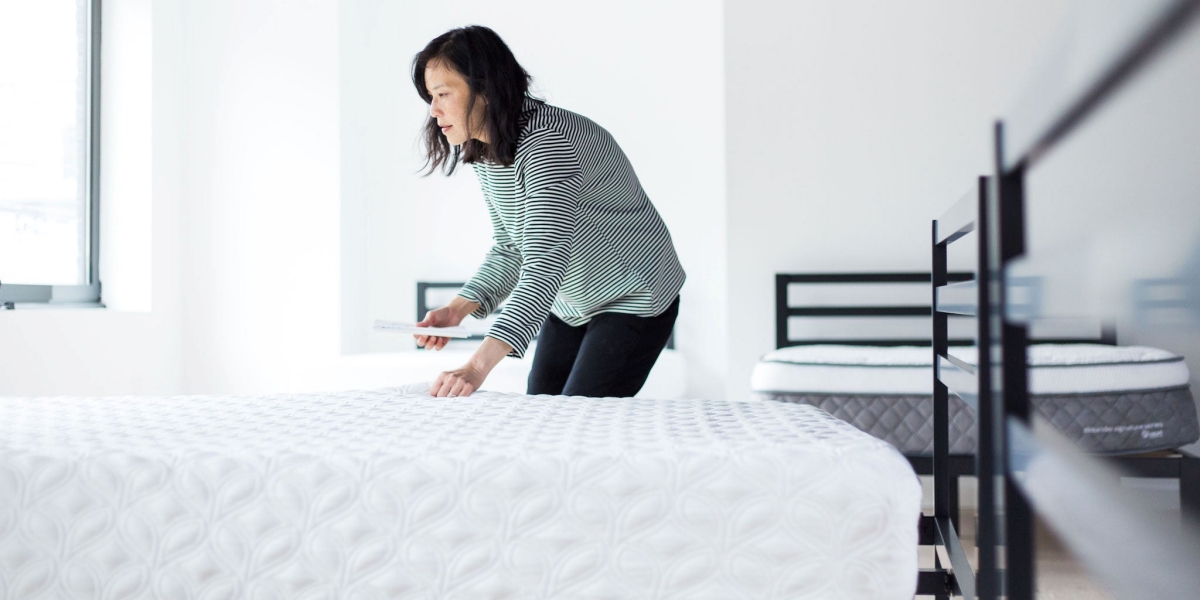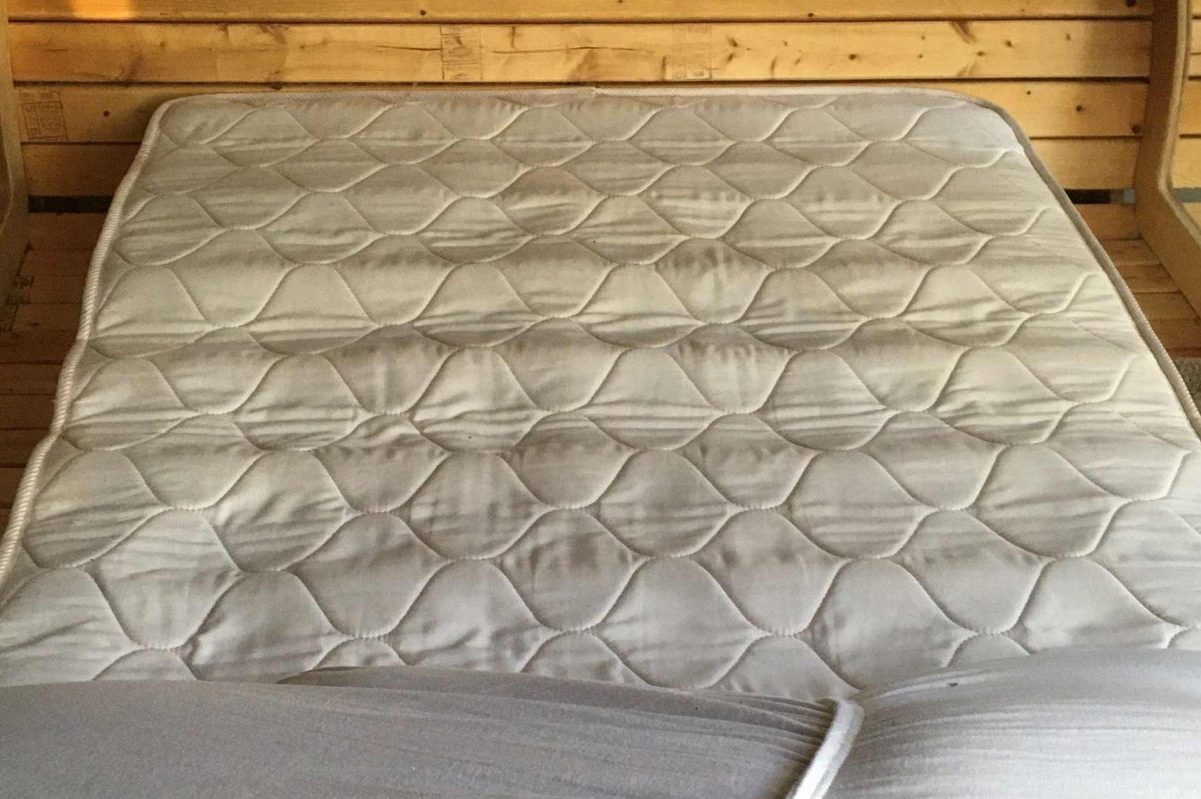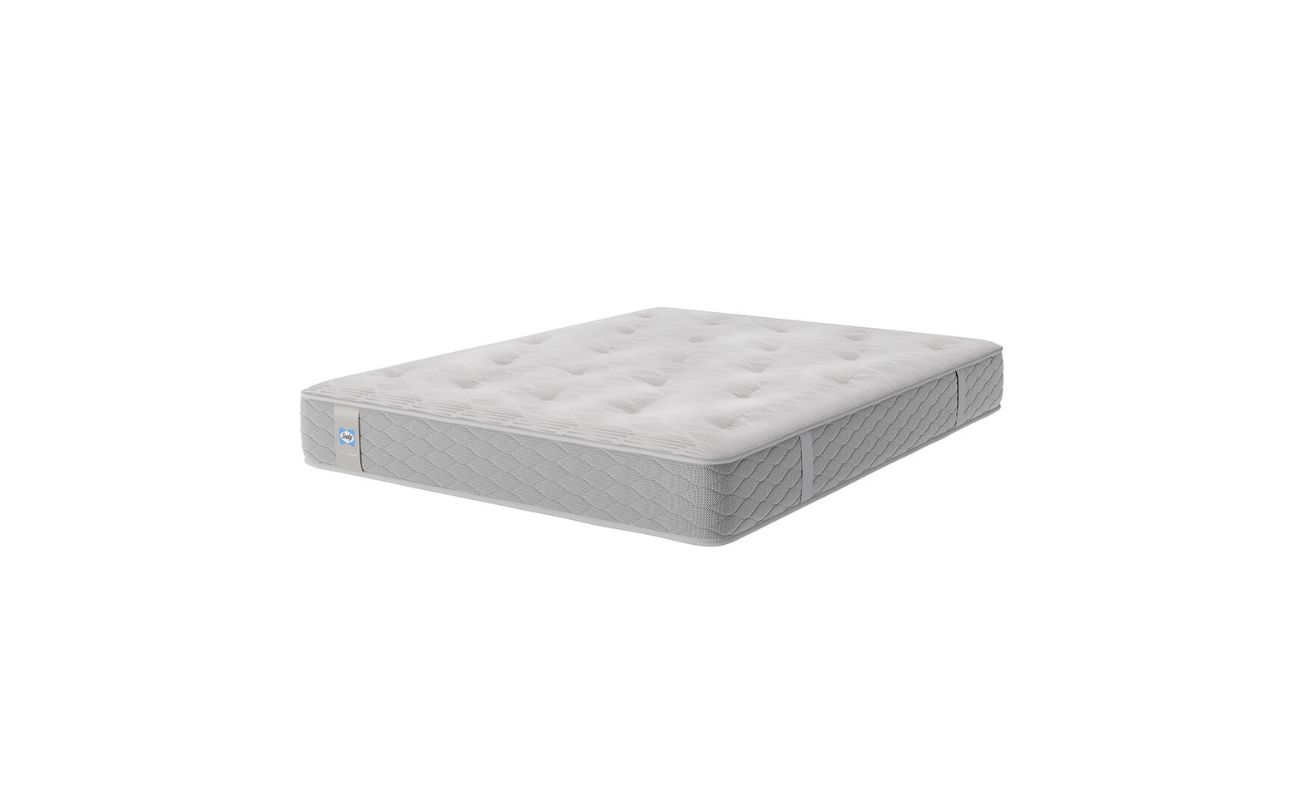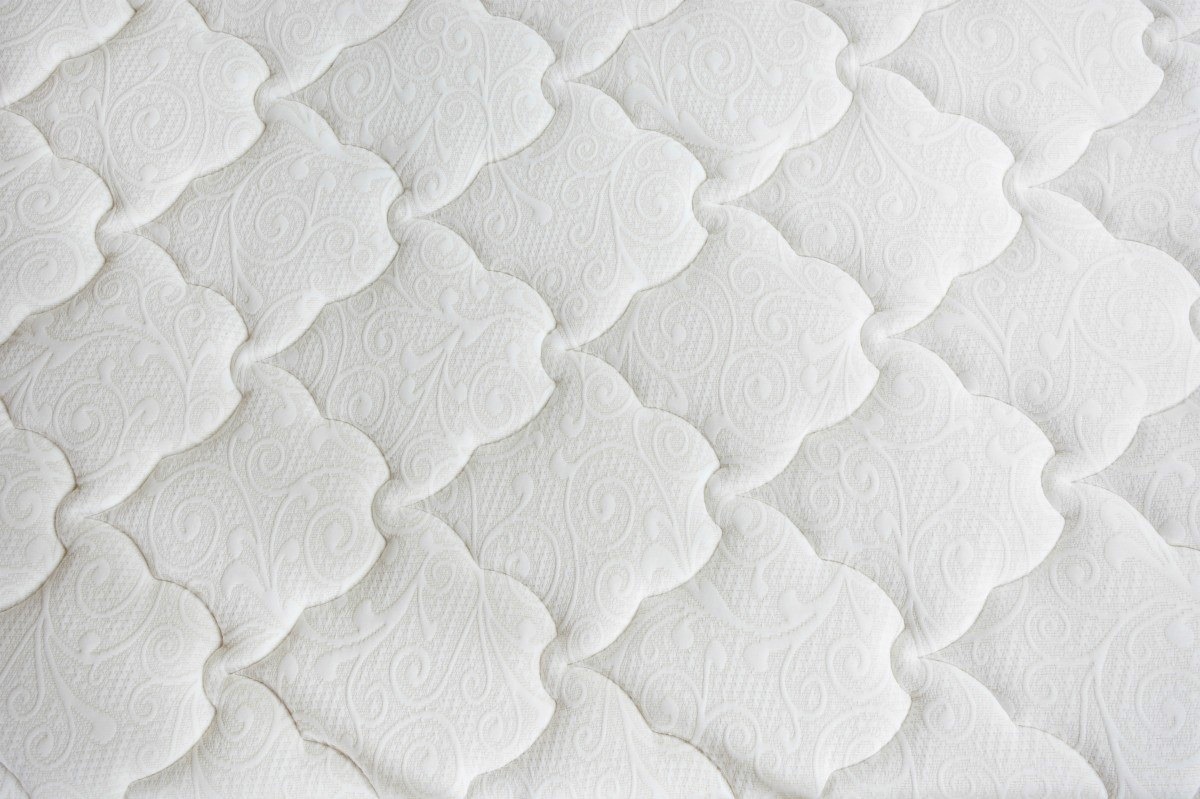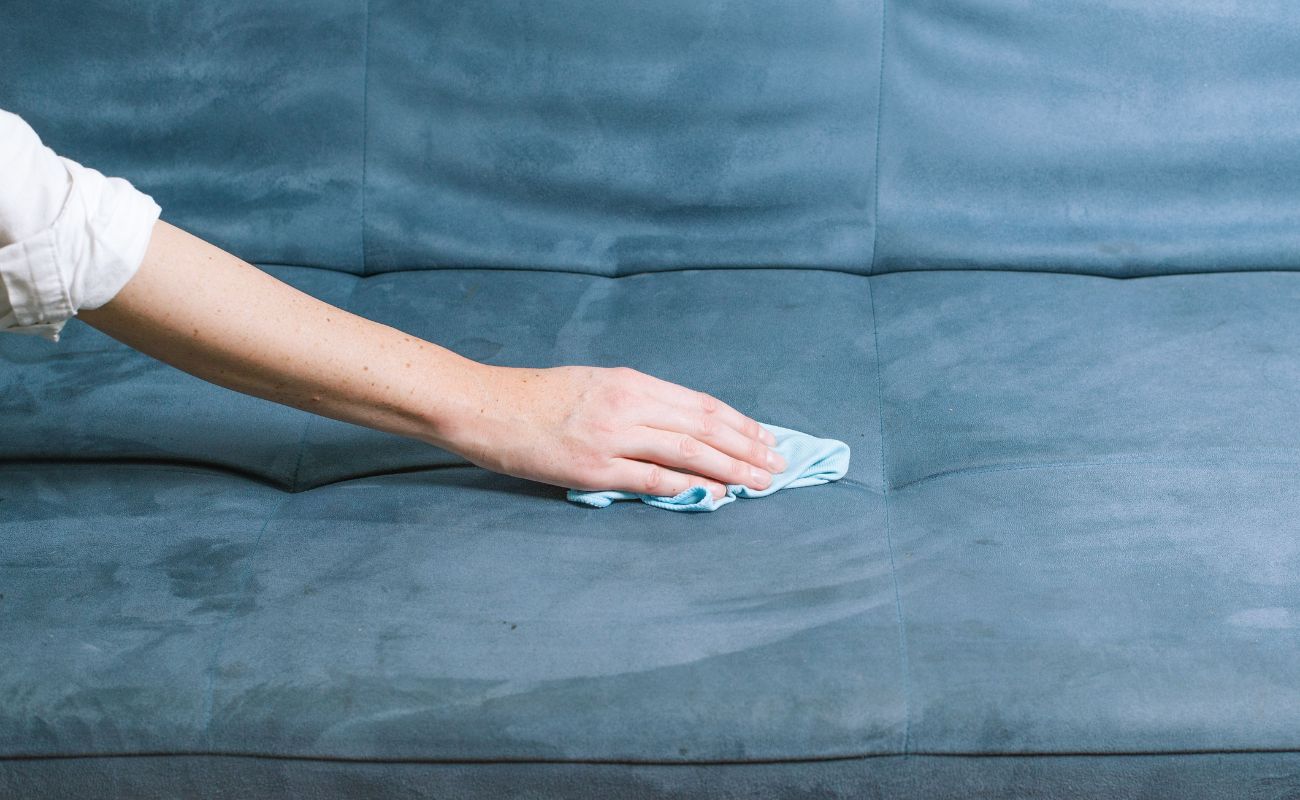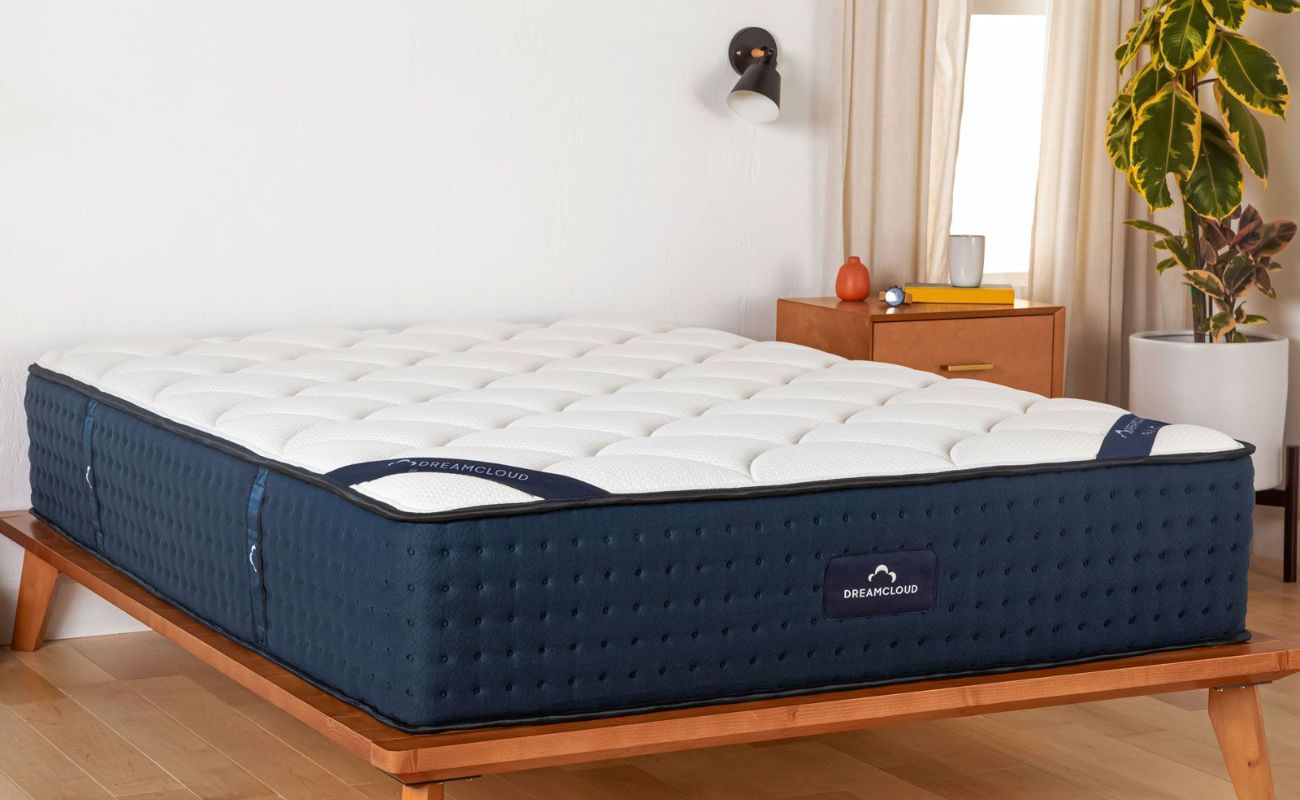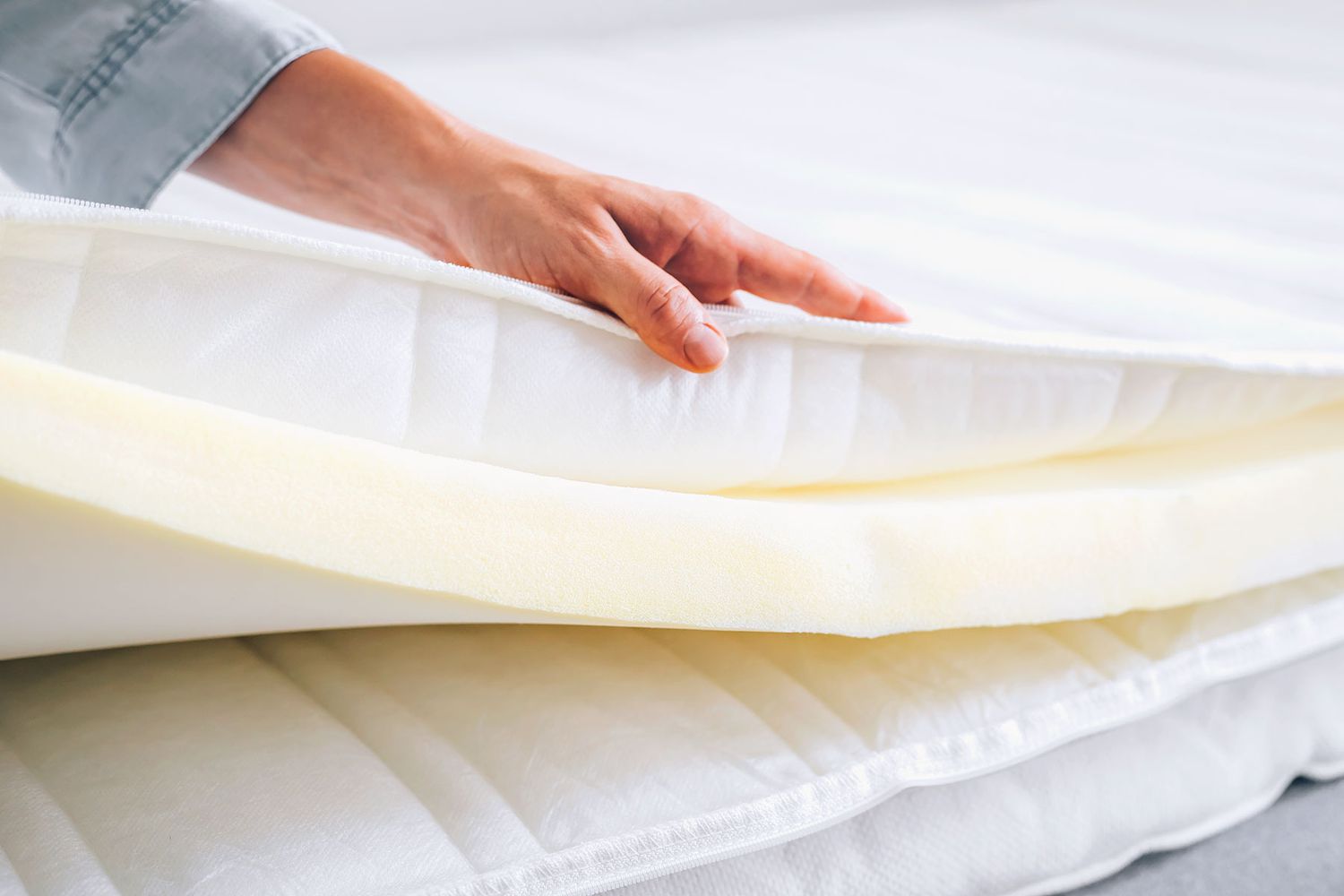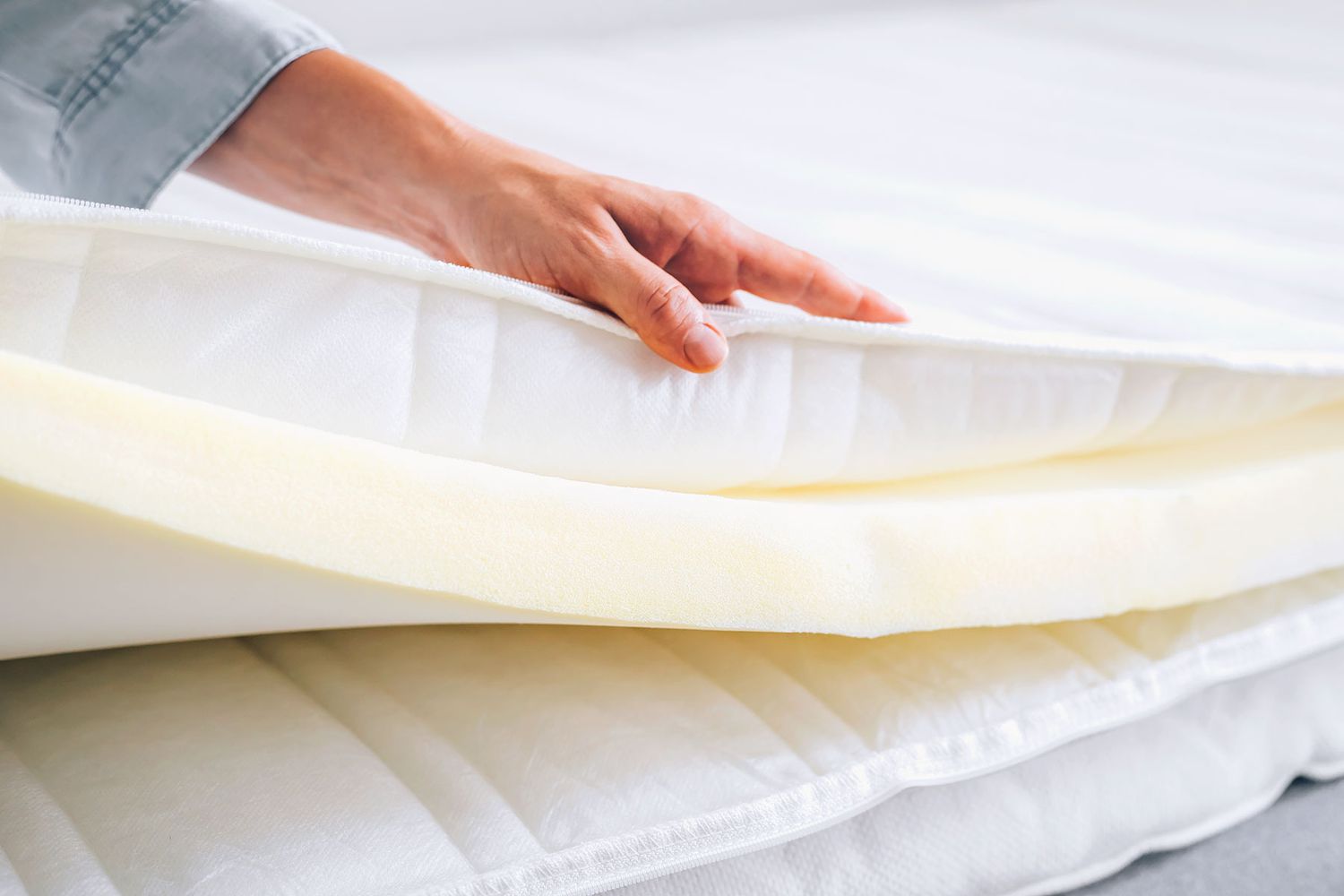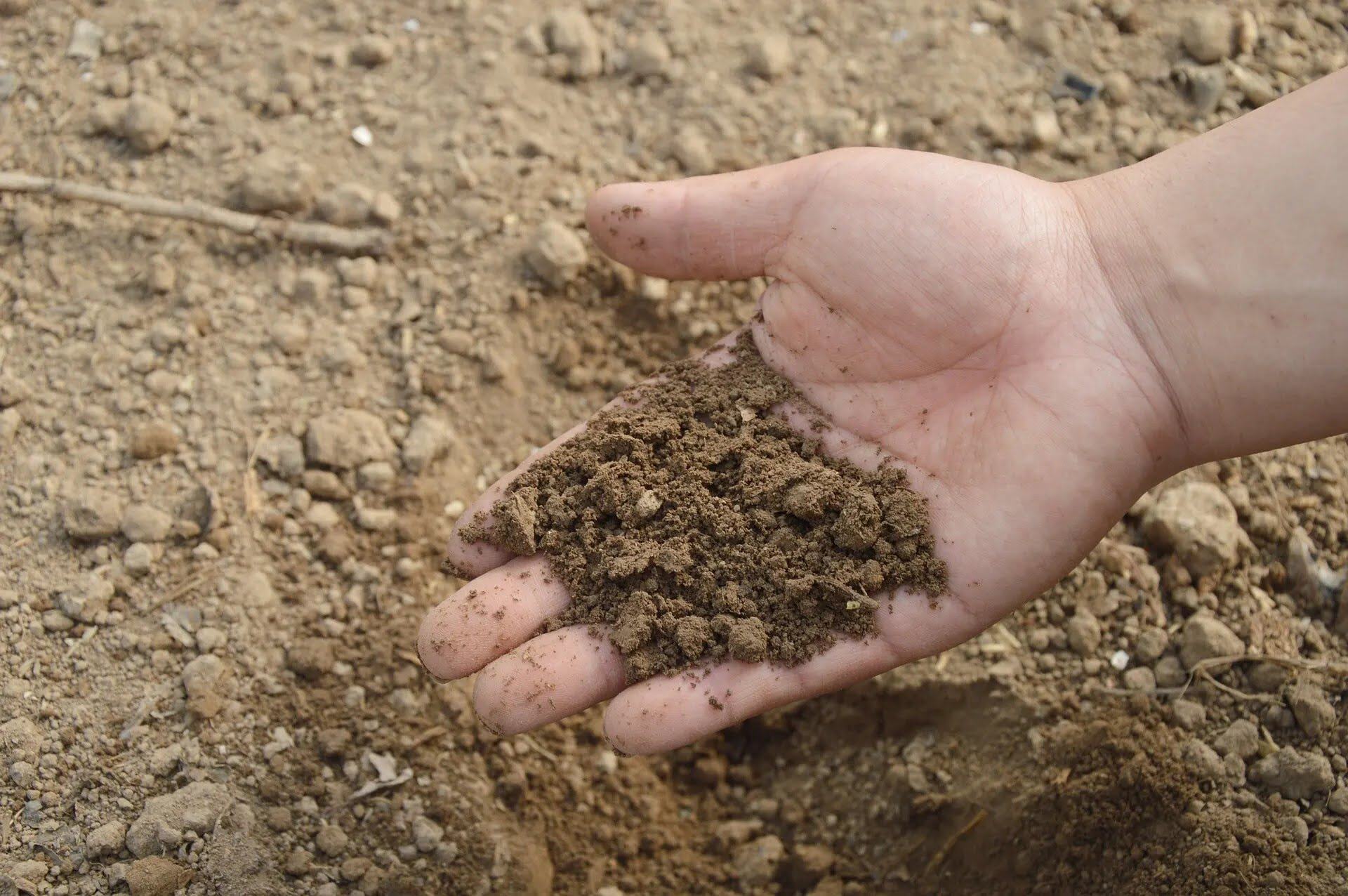Home>Furniture>Bedroom Furniture>How Do You Dry A Mattress
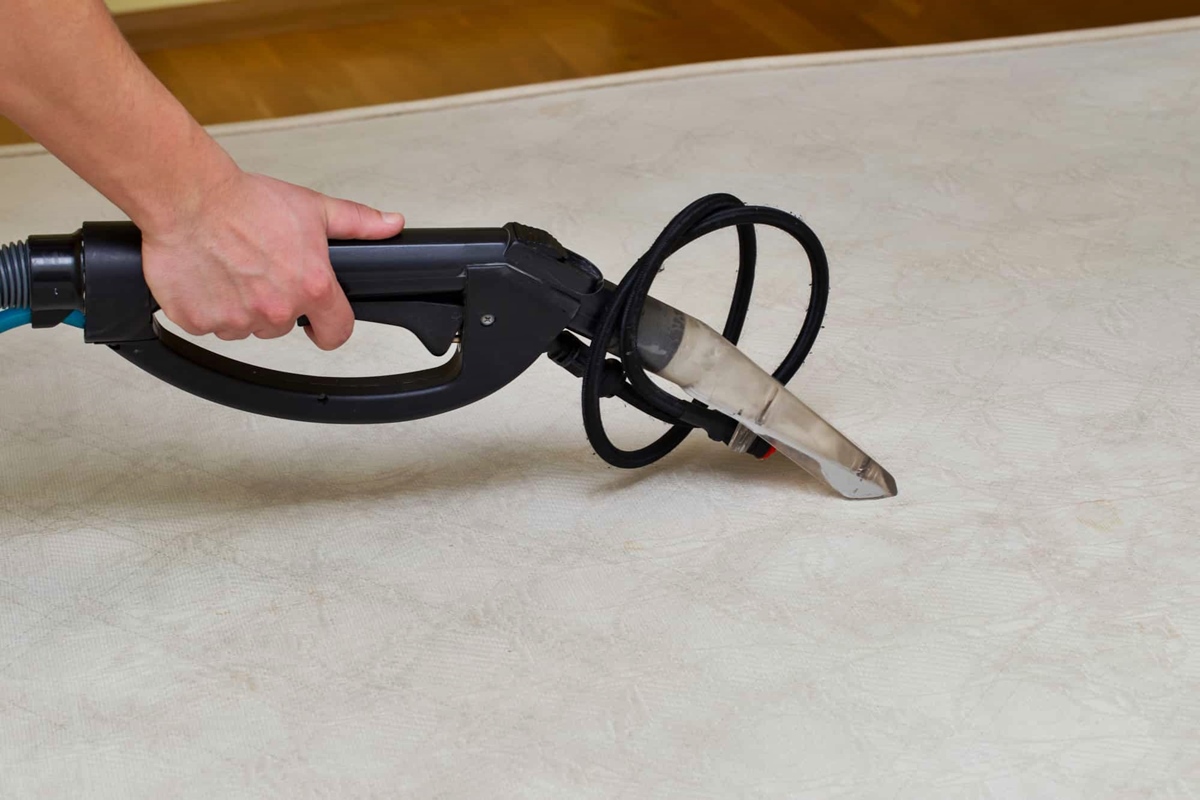

Bedroom Furniture
How Do You Dry A Mattress
Modified: March 24, 2024
Discover the best ways to dry a mattress in your bedroom. Get expert tips and advice on drying methods for bedroom furniture.
(Many of the links in this article redirect to a specific reviewed product. Your purchase of these products through affiliate links helps to generate commission for Storables.com, at no extra cost. Learn more)
Introduction
Welcome to the ultimate guide on drying a mattress! Whether you’ve spilled a drink, experienced a leaky roof, or simply want to freshen up your mattress, knowing how to properly dry it is crucial in preventing mold and mildew growth. In this article, we will explore different methods and techniques to effectively dry your mattress, ensuring it remains clean, fresh, and comfortable for years to come.
Before we delve into the drying process, let’s understand why it’s important to address wetness or moisture in your mattress promptly. Dealing with a wet mattress can be a hassle, but the consequences of neglecting it can be far more troublesome. Moisture can lead to the growth of mold, mildew, and bacteria, which not only cause unpleasant odors but can also pose a risk to your health. Additionally, a damp mattress can become a breeding ground for dust mites, further exacerbating respiratory issues or allergies.
Now that we understand the importance of drying a mattress, let’s move on to the practical steps you can take to ensure its quick and efficient drying. It’s crucial to prepare the mattress properly before starting the drying process, as this will help expedite the overall drying time and prevent any potential damage.
Key Takeaways:
- Ensure your mattress stays clean and fresh by promptly drying it to prevent mold, mildew, and odors. Follow practical steps like air drying, using fans, and absorbing moisture for effective results.
- Implement preventive measures like using a mattress protector, maintaining a dry sleeping environment, and regular cleaning to minimize the risk of a wet mattress and extend its lifespan.
Read more: How To Dry A Mattress
Understanding the Need for Drying a Mattress
There are several reasons why you might need to dry a mattress. Accidental spills, water leaks, excessive sweating, or even high humidity can all result in a wet mattress. Regardless of the cause, it’s important to address the issue promptly to avoid potential damage and health concerns.
When a mattress remains wet or damp for an extended period, it creates an ideal environment for mold and mildew growth. These allergens not only emit unpleasant odors but can also trigger respiratory problems and allergies in susceptible individuals. Additionally, dust mites thrive in moist environments, and their presence can exacerbate asthma and other respiratory issues.
Moreover, a wet mattress can significantly affect sleep quality and comfort. The dampness can make the mattress feel cold, clammy, and uncomfortable, making it difficult to fall asleep or stay asleep throughout the night. This can lead to disrupted sleep patterns, fatigue, and even impact your overall well-being.
By understanding the need for drying a mattress, you can take proactive steps to prevent any potential damage to your health, sleep quality, and the longevity of your mattress. Now, let’s explore how to properly prepare your mattress for effective drying.
Preparing the Mattress for Drying
Before you begin the drying process for your wet mattress, it’s important to properly prepare it to ensure an efficient and successful outcome. Follow these steps to get your mattress ready for drying:
- Remove all bedding: Start by stripping off all the sheets, blankets, and mattress protectors from the wet mattress. This will allow proper airflow and prevent any additional moisture from getting trapped.
- Blot excess moisture: If the mattress is visibly wet, use a clean absorbent towel or cloth to gently blot the moisture. Avoid rubbing or pressing too hard, as this can push the moisture further into the mattress.
- Vacuum the mattress: Use a vacuum cleaner with an upholstery attachment to remove any loose dirt or debris from the mattress surface. This step will help prevent any particles from becoming trapped during the drying process.
- Neutralize odors: If your mattress has a foul smell due to the moisture, sprinkle baking soda over the surface and let it sit for a few hours. Baking soda is a natural odor absorbent and will help eliminate any unwanted smells.
- Elevate the mattress: Prop up the mattress against a wall or place it on a slatted surface to allow proper air circulation. This will facilitate the drying process and prevent any moisture from getting absorbed back into the mattress.
- Open windows or use fans: Create good airflow in the room by opening windows and doors or using fans. Adequate ventilation will aid in the evaporation of moisture from the mattress.
Following these steps will help prepare your mattress for optimal drying results. Now that you’re ready to start the drying process, let’s explore different methods to effectively dry a mattress.
Air Drying a Mattress
Air drying is one of the most common and effective methods for drying a wet mattress. This process involves allowing natural airflow to evaporate the moisture from the mattress. Follow these steps for air drying your mattress:
- Find a well-ventilated area: Choose a location with good airflow, such as a covered outdoor space or a well-ventilated room. Avoid direct sunlight, as it can cause fading or damage to the mattress fabric.
- Position the mattress: Lay the mattress flat on a clean, dry surface. If possible, place it on a sturdy clothesline or an elevated platform to promote airflow on both sides of the mattress.
- Rotate the mattress: Flip the mattress periodically to ensure even drying. This will prevent moisture from getting trapped in specific areas and promote uniform drying throughout the mattress.
- Patience is key: Air drying a mattress can take time, depending on the extent of moisture and external factors like humidity levels. Be patient and allow sufficient time for the mattress to dry completely. It’s wise to check the mattress regularly for any signs of remaining moisture.
It’s important to note that air drying may not be suitable for mattresses with thick padding or those that have absorbed a significant amount of liquid. In such cases, it’s recommended to explore alternative methods or seek professional assistance.
If air drying alone is not sufficient or practical, you can also use fans or air circulation devices to speed up the drying process. Let’s dive into the details of this method in the next section.
Using Fans or Air Circulation for Drying
If you’re looking for a quicker way to dry your mattress, using fans or air circulation devices can help speed up the process. By directing airflow over the mattress surface, you can facilitate evaporation and reduce drying time. Here’s how to effectively use fans or air circulation for drying:
- Select the right fans or devices: Choose fans or air circulation devices that can generate a sufficient amount of airflow. Box fans, tower fans, or even industrial-grade blowers can be effective options for speeding up the drying process.
- Position the fans: Place the fans around the mattress strategically to ensure maximum airflow. Set up fans on both sides of the mattress, aiming them towards the surface at an angle. This will help create a cross breeze that aids in moisture evaporation.
- Adjust fan speed and direction: Depending on the power and settings of your fans, you can adjust the speed and direction of the airflow. Experiment with different fan speeds and angles to find the most effective configuration for drying your mattress.
- Monitor the drying process: Regularly check the mattress for any signs of remaining moisture. If needed, adjust the placement or settings of the fans to target specific areas that might require additional drying.
Using fans or air circulation for drying can significantly reduce the drying time compared to air drying alone. However, it’s important to exercise caution and avoid placing the fans too close to the mattress or using excessive airflow, as this can potentially damage the mattress or create excess noise in your living space.
While fans can be effective in drying a wet mattress, it’s important to remember that they might not be suitable for mattresses with sensitive materials or intricate designs. In such cases, it’s best to follow other methods or seek professional assistance to ensure the safety and longevity of your mattress.
Next, we’ll discuss another technique for absorbing moisture from a wet mattress.
After cleaning a wet mattress, use a fan or dehumidifier to speed up the drying process. You can also place the mattress in a well-ventilated area with good air circulation.
Read more: How Do You Disinfect A Mattress
Absorbing Moisture from a Mattress
If you’re dealing with a wet mattress and want to expedite the drying process, you can use various materials and techniques to absorb moisture effectively. Here are some methods for absorbing moisture from a wet mattress:
- Use absorbent materials: Place absorbent materials such as clean, dry towels or thick layers of paper towels on the surface of the wet mattress. Press gently to allow the materials to absorb the moisture. Replace them as they become saturated.
- Utilize moisture-absorbing agents: Baking soda, cornstarch, or silica gel packets (commonly found in packaging) can help absorb excess moisture from a wet mattress. Sprinkle a generous amount of the substance evenly over the mattress surface and let it sit for a few hours. Vacuum or brush off the residue once it has absorbed the moisture.
- Consider using a dehumidifier: If the surrounding humidity level is high, using a dehumidifier in the room can help extract moisture from the air, aiding in the overall drying process of the mattress.
- Rotate and reposition: Occasionally rotate and reposition the mattress to expose different areas to the drying materials. This will help ensure that moisture is evenly absorbed and distributed throughout the mattress.
Remember, the effectiveness of these methods may vary depending on the extent of moisture and the type of mattress you have. It’s crucial to be patient and regularly monitor the progress of moisture absorption.
While absorbing moisture is an essential aspect of drying a wet mattress, it’s equally important to address any stains or odors that may have resulted from the moisture. In the next section, we’ll explore techniques for removing stains and odors from a wet mattress.
Removing Stains and Odors from a Wet Mattress
When dealing with a wet mattress, it’s not uncommon to encounter stains or unpleasant odors. However, with the right techniques, you can effectively remove stains and eliminate odors, restoring your mattress to its clean and fresh state. Follow these steps to tackle stains and odors from a wet mattress:
- Blot the stain: If there are visible stains on the mattress, start by gently blotting the area with a clean, damp cloth. Avoid rubbing the stain, as this can spread it further or push it deeper into the mattress fabric.
- Apply a stain remover: Depending on the type of stain, you can use a suitable stain remover. Common stain removers include mild detergent mixed with water or a mixture of vinegar and water. Apply the stain remover to the affected area and gently scrub with a soft cloth or brush.
- Blot and rinse: After applying the stain remover, blot the area again with a clean cloth to absorb the moisture and residue. For tougher stains, repeat the process or consider using a specialized stain-removing product specifically designed for mattresses.
- Neutralize odors: To eliminate odors, sprinkle baking soda generously over the entire mattress surface. Let the baking soda sit for several hours, allowing it to neutralize any unwanted smells. Vacuum the mattress thoroughly to remove the baking soda residue.
- Consider enzyme cleaners: For stubborn stains or persistent odors, enzyme cleaners can be effective. These cleaners contain enzymes that break down organic compounds, helping to remove stains and eliminate odors. Follow the instructions on the product label for best results.
It’s important to treat stains and odors promptly to prevent them from becoming set-in or lingering. Always test any cleaning solution or stain remover on a small, inconspicuous area of the mattress before applying it to the stain.
Once you’ve successfully removed stains and odors from your wet mattress, it’s crucial to implement preventive measures to minimize the likelihood of future mishaps. In the next section, we’ll discuss some prevention and maintenance tips for keeping your mattress dry.
Prevention and Maintenance Tips for Keeping Your Mattress Dry
Preventing moisture buildup in your mattress is key to ensuring its longevity and keeping it fresh and hygienic. By following these prevention and maintenance tips, you can minimize the risk of a wet mattress:
- Use a mattress protector: Invest in a waterproof mattress protector to create a barrier between your mattress and any potential spills or accidents. A mattress protector will help prevent liquids from seeping into the mattress fabric, making cleaning and drying easier.
- Keep drinks away from the bed: Avoid consuming beverages in bed, especially without a secure lid or cap. Accidental spills can quickly saturate the mattress and lead to unwanted moisture buildup.
- Maintain a dry sleeping environment: Ensure the room where your mattress is located is well-ventilated and at an appropriate humidity level. Use a dehumidifier if necessary to keep the air dry and prevent excess moisture from affecting your mattress.
- Address leaks and water damage: If your mattress has been exposed to water due to a leak or flooding, act quickly to remove the mattress from the wet environment. Dry it promptly, following the steps we outlined earlier, to prevent mold and mildew growth.
- Regularly clean and rotate: Clean your mattress regularly by vacuuming the surface to remove dust, dirt, and allergens. Additionally, consider rotating or flipping your mattress every few months to distribute wear and tear evenly and prevent moisture buildup in specific areas.
- Avoid excessive moisture: Minimize excessive moisture in the bedroom by ensuring damp towels, wet clothes, or other items aren’t left on or near the mattress. Properly dry and store wet items away from the sleeping area.
By implementing these preventive measures and maintaining good mattress hygiene, you can significantly reduce the risk of a wet mattress and extend its lifespan. Regularly check for any signs of moisture or stains and address them promptly to prevent any potential damage.
With these prevention and maintenance tips in mind, you can enjoy a dry and comfortable mattress for years to come. Remember, a clean, dry mattress not only promotes better sleep but also contributes to your overall well-being.
By utilizing the drying techniques, removing stains and odors, and implementing preventative measures, you can ensure your mattress stays dry, fresh, and comfortable. With a little time and effort, you can extend its lifespan and maintain a healthy sleep environment.
We hope this comprehensive guide has provided you with valuable insights and practical tips on how to effectively dry a mattress. Now, armed with this knowledge, you can tackle any wet mattress situation with confidence!
Remember to reference this guide whenever you encounter a wet mattress, and share this invaluable information with friends and family who might find it helpful. Here’s to keeping your mattress dry and cozy for many restful nights ahead!
Conclusion
In conclusion, knowing how to effectively dry a mattress is essential for maintaining its longevity, cleanliness, and overall comfort. Moisture in a mattress can lead to mold, mildew, and unpleasant odors, impacting both your health and sleep quality. By following the steps outlined in this guide, you can successfully dry a wet mattress and prevent any potential damage.
Start by properly preparing the mattress, removing all bedding, and blotting excess moisture. Then, choose a drying method that suits your situation, such as air drying, using fans or air circulation, or absorbing moisture with towels or moisture-absorbing agents. Additionally, don’t forget to address any stains and odors that may have resulted from the moisture.
Prevention and maintenance are key in keeping your mattress dry. Use a mattress protector to protect against spills and accidents, maintain a dry sleeping environment, and regularly clean and rotate your mattress. By implementing these preventive measures, you can minimize the risk of a wet mattress and extend its lifespan.
We hope this comprehensive guide has provided you with valuable information and practical tips for drying a mattress. Remember to be patient during the drying process and always prioritize safety and the specific care instructions for your mattress.
With the knowledge and techniques shared in this guide, you can confidently tackle any wet mattress situation and enjoy a clean, fresh, and comfortable sleep surface. Sleep tight!
Frequently Asked Questions about How Do You Dry A Mattress
Was this page helpful?
At Storables.com, we guarantee accurate and reliable information. Our content, validated by Expert Board Contributors, is crafted following stringent Editorial Policies. We're committed to providing you with well-researched, expert-backed insights for all your informational needs.
